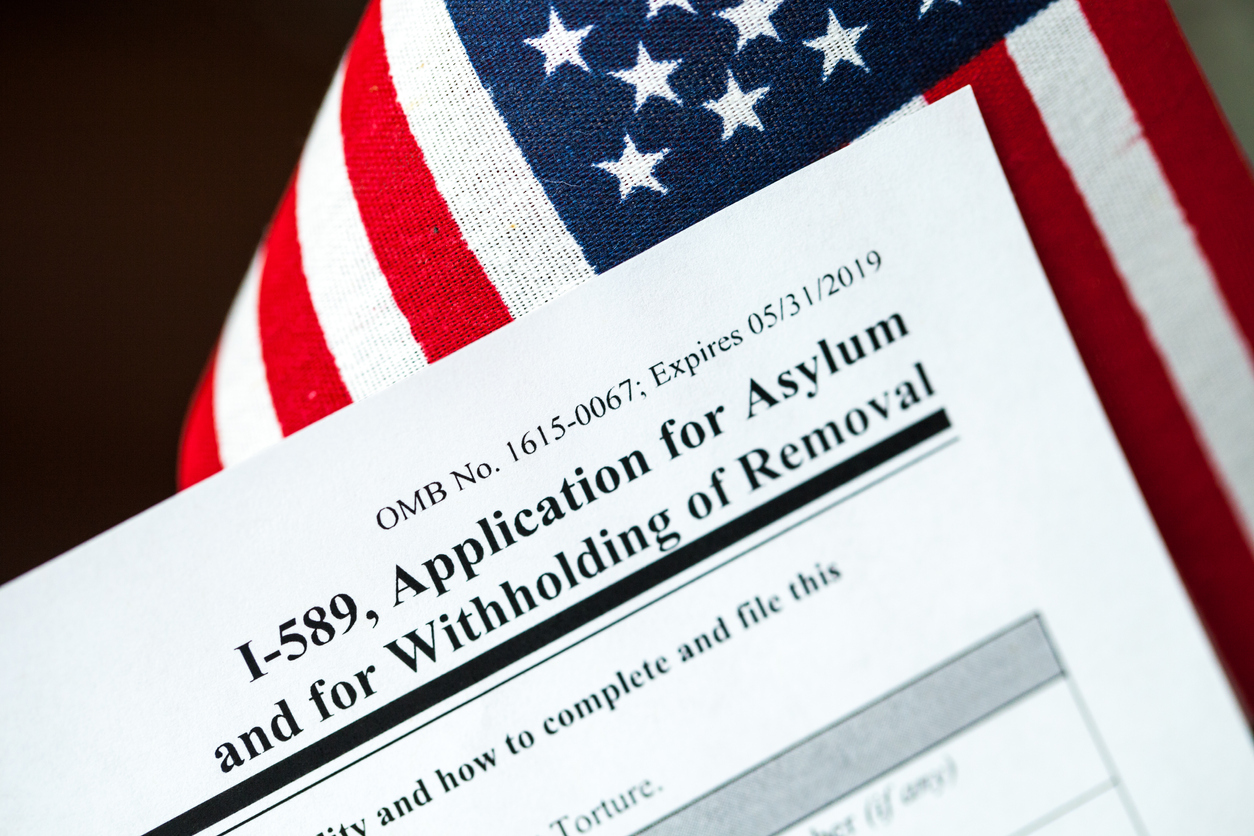Immigration Blog
May 3, 2020
Form i589: Asylum Versus Withholding of Removal: What are the Differences?

When coming to the United States to escape persecution or torture, many think asylum is their only way to remain in the U.S. However, there are many different ways to stay in the U.S., and one of these lesser known methods is withholding of removal. The following is an overview of the differences between asylum and withholding of removal, and why typically when applying for one option applicants also apply for the other.
What is Asylum?
In the United States asylum may be granted to individuals who can establish they have a well-founded fear of persecution if they are forced to return to their country of citizenship or last habitual residence. The persecution must be on account of political opinion, race, religion, nationality, or membership in a particular social group. There are two types of asylum claims: affirmative asylum and defensive asylum.
Affirmative asylum is when someone applies for asylum via the United States Immigration and Citizenship Services (USCIS). An applicant for affirmative asylum must be physically present in the U.S. and apply for asylum within one year of entering the U.S. If an applicant applies for asylum after the one year mark, the applicant must show changed or extraordinary circumstances which would have caused the delay in application. If the applicant is denied asylum, they will be placed in removal proceedings. However, the applicant will have a right to appeal the asylum denial if they choose.
Defensive asylum is when an immigrant applies for asylum in defense of removal proceedings. There are several ways in which someone may find themselves in the situation of applying for defensive asylum, including arrests or being detained at a port of entry. If an applicant is denied defensive asylum, the applicant will be placed in removal proceedings. However, the applicant will still have a right to appeal the asylum denial if they choose.
Applying for asylum requires the applicant to demonstrate they have a well-founded fear of persecution if they return to their country of origin. Providing this can be done through direct evidence, the applicant’s testimony, or corroborative testimony. Applying for asylum is a difficult process as showing a case of past or future persecution can be very challenging without the help of an immigration attorney.
What is Withholding of Removal?
Withholding of removal is a separate form of relief to those who are currently in removal proceedings. The United States cannot deport a person to a country where their life or freedom would be threatened, because of their race, religion, nationality, membership in a particular social group or political opinion. If a person in removal proceedings can demonstrate through a clear probability their life or freedom is at risk in the country which they would be deported to, the U.S. cannot legally remove them.
Unlike asylum, to be granted withholding of removal an applicant must demonstrate it is more likely than not their freedom or life will be threatened if they are deported. Withholding of removal acts as a final defense against removal, especially for those who missed the one year filing deadline for asylum and cannot otherwise show additional hardship which prevented the applicant from meeting the deadline. Another benefit of withholding of removal is those who would be barred from asylum, for instance those who have committed certain criminal offenses, can still apply for withholding of removal.
Which is the Better Option?
Whether someone should apply for asylum, withholding of removal, or both is determined on a case-by-case basis. If someone is eligible for asylum the person should also apply for a withholding of removal as another potential form of relief. Withholding of removal is a more difficult standard to meet as it requires showing harm will more likely than not occur rather than demonstrating a well-founded fear of persecution.
If an individual is granted asylum, they will be able to work and eventually apply for lawful permanent resident (LPR) status in the United States. However, if an individual is only granted withholding of removal they will be unable to to apply for LPR status. Furthermore, those only granted withholding of removal are still subject to a final order or removal to a third country if the government sees fit, they must pay a yearly renewal fee to work within the U.S., and they are unable to leave the U.S. without abandoning their withholding status. In order for someone to be granted withholding of removal to be granted LPR status or U.S. citizenship, they will have to reopen their immigration case.
While a grant of asylum provides more rights and greater flexibility, withholding of removal is an important option for those who are unable to apply for asylum. If an individual is barred from applying for asylum because of technical reasons withholding of removal is a viable option. Both asylum and withholding of removal should be considered for individuals who fear past or future persecution in their country of origin.
The process of deciding whether asylum, withholding of removal, or both are right for you should be done under the guidance of an immigration attorney. For more information contact Bailey Immigration at (866) 521-6422.
